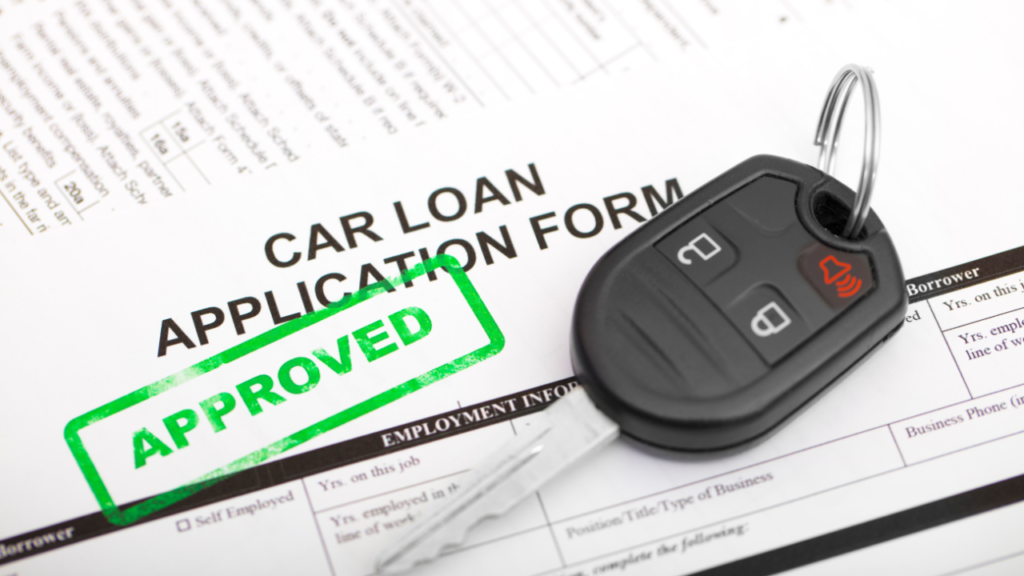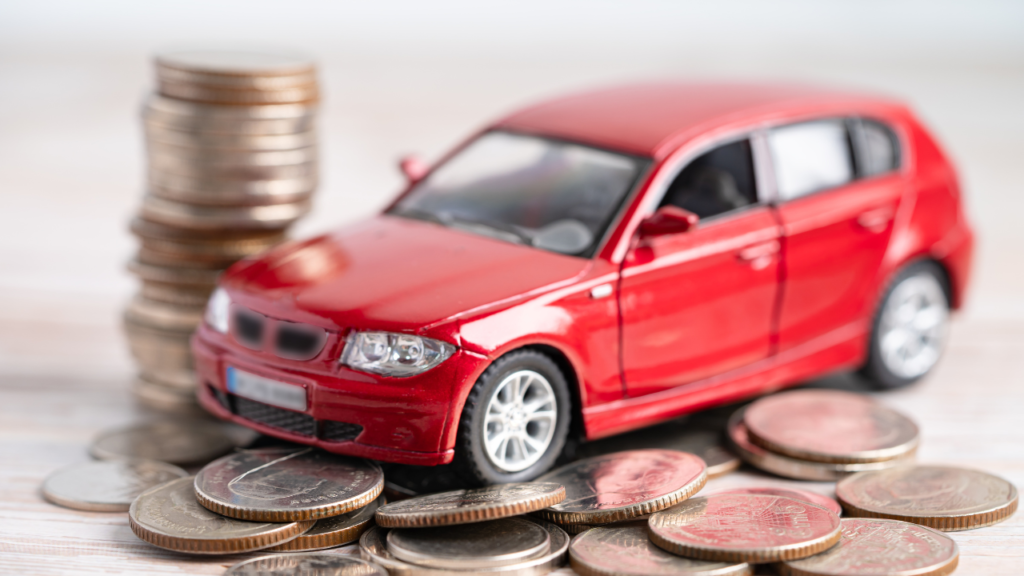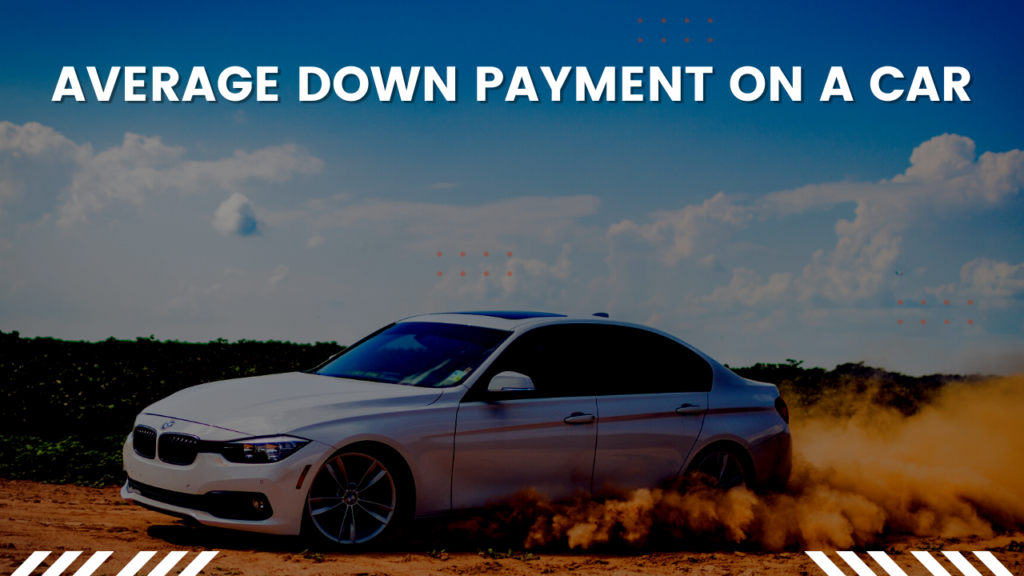The cost of buying a new or used car has increased significantly, resulting in higher monthly payments for consumers. To get an auto loan, it’s generally recommended to make a down payment of 10-20% of the total price. However, it’s important to assess your finances before deciding on a figure that fits your budget.
When buying a new or used car, you may be wondering how much of a down payment is necessary. Do you need to pay a minimum? Will more money down give you a better deal? How will a down payment affect your monthly payments? Your down payment amount is based on what you can afford, but there are some important points to consider before visiting the dealership.
Table of Contents
ToggleUnderstanding Average Down Payment On A Car
If you are buying a car and need to borrow money, you may be wondering how much of an average down payment on a car you need. Your down payment can have an impact on your monthly payments, as well as the total cost of the vehicle.
A down payment is the initial amount of money applied to a purchase that is being financed by the buyer. Some people choose to make a large upfront payment to reduce the amount they need to borrow, while others finance their entire purchase without making any additional payments.
Depending on your lender, they may require a certain percentage of the total cost as a minimum down payment in order to get approved for financing. The size of your down payment will also affect your loan rate and monthly payments.

What is a down payment on a car?
The average down payment on a car can vary depending on several factors, such as the price of the car, the buyer’s credit history, and individual preferences. A down payment for a car is typically a percentage of the total purchase price.
Traditionally, it is recommended to make a down payment of around 20% of the car’s purchase price. However, many buyers make smaller down payments, ranging from 10% to 15% or even less. Some buyers may also make a larger down payment to reduce the loan amount and monthly payments.
For example, if the price of a car is $30,000, a 20% down payment would be $6,000. However, it’s important to note that this is just an average, and individual circumstances can vary.
Remember that if you make a smaller down payment, you may need to finance a larger portion of the car’s price, resulting in higher monthly loan payments. A larger down payment can often lead to better loan terms, such as lower interest rates or shorter loan durations.
Ultimately, the decision on how much to put down as a down payment on a car should be based on your financial situation and goals. It’s a good idea to consider your budget, available savings, and the overall cost of owning the car when determining the down payment amount that works best for you.
How Down Payment Affects Car Loan
Making a down payment of at least 20 percent when buying a car is recommended, but can be difficult due to the high prices of new and used vehicles. For example, 20 percent of $35,000 is $7,000. Although it may seem expensive, this amount can help you get approved for better interest rates & lower monthly payments over the life of the loan.
If you are unable to make that large of payment, try for 10 percent instead. You may also consider trading in your old car or negotiating for a cheaper price to get closer to the suggested amount. Ultimately, only put down what you can comfortably afford without draining your savings account.
Down payments on car purchases can save you money & lower your monthly payments. Here are some other reasons why they are important:
- Making a larger down payment can help you get more favorable loan terms, such as a lower interest rate.
- When you make a down payment on your car, you will have equity in it. This means that the amount you owe is less than the car’s value. This can protect you from owing more money than the car is worth if you decide to sell or trade it in soon after taking out a loan.

Pros & Cons of Making a Down Payment on a Car
Pros of Making a Down Payment on a Car
Making a large down payment on a car loan can be beneficial from a long-term perspective. There are advantages & disadvantages to doing so, but here are some of the main benefits: it reduces your monthly payments, lowers overall interest rates, builds equity faster & may even help you qualify for better financing terms.
- By putting money down on a car, you can reduce the amount of your loan & save money on interest charges. This will give you more financial flexibility in the future.
- Making a large down payment reduces the amount you need to borrow, which in turn lowers your monthly payments. This provides more flexibility in your budget each month.
- Making a down payment on an auto loan can save you money in the long run. Interest charges are reduced, which is especially beneficial for buyers with less-than-perfect credit who can’t qualify for low-interest rates. To check how much you could save, use online auto loan calculators.
- Putting down a large enough down payment when you buy a car can help reduce or avoid negative equity. Negative equity occurs when you owe more on a loan than the vehicle is worth, which is common because cars depreciate in value over time.
- Making a large down payment can make a shorter loan term an achievable option. This can help you save on interest costs & avoid having negative equity, as shorter loan terms often come with higher monthly payments. A down payment will enable you to take advantage of the benefits of a shorter loan term while still keeping your payments manageable.
- Making a large down payment can help you get approved for a loan even if you have poor credit. A down payment reduces the amount of money you are requesting & can offset some of the risks associated with having bad credit.
- Making a down payment on your loan can have a positive effect, both psychologically & financially. From your perspective, it serves as motivation to make regular payments, since you’ve invested your own money into a loan. For lenders, it shows that you are committed to making payments & are willing to back it up with your own funds.
Cons of Making a Down Payment on a Car
Making a large down payment on a car loan can have drawbacks. Here are some of them.
- A large down payment usually won’t lead to a lower interest rate, even if your credit score is low. This may happen in rare cases, but it won’t change the rate – it only reduces the overall cost of the loan.
- Buying a big item may put a strain on your savings if you haven’t been saving for it. It’s best to keep some of your savings in case of an emergency, so try not to deplete them when making a down payment.
- Many people need a vehicle to go about their daily lives, but they may not have time to save up for a down payment in advance. need for a car is often immediate, so many buyers don’t have time to save up beforehand.
- You won’t be able to use the money for anything else, even though it offers many benefits in the long run. This can be difficult to accept in the short term.
Making a larger down payment for your auto loan has many benefits, such as reducing the amount of interest you will pay over time & lowering your monthly payments. With proper budgeting and planning, these potential drawbacks can be avoided.
Importance of Down Payment on a Car
Making a large down payment on a vehicle can bring many benefits. A down payment of 20% or 10% is the minimum, so putting more money down will be beneficial for loan terms.
Lower Monthly Payments
Putting more money down on your car loan can help you lower your monthly payments & pay off your loan faster. For every $1,000 you put down, you can expect a decrease of $15 to $18 in your monthly payment. Use our auto loan calculator to see how different down payment amounts will affect your payments.
Lower Interest Rates
Putting more money down on a purchase typically results in a lower interest rate. Making a large down payment shows lenders that you are less of a risk, & reduces the amount you need to borrow. This allows you to choose a shorter loan term & pay less in interest over time.
Shorter Loan Terms
Auto loans are based on a loan-to-value ratio (LTV) which is the maximum amount of money you can borrow compared to a car’s value. The lower your LTV, the lower interest rates you will get. The length of a loan usually ranges from two to eight years. However, if you make a large down payment, your loan term can be reduced. Paying off debt quickly is always preferable & possible with a big down payment.
Lower Total Cost of Car Ownership
When you purchase a new car, its value decreases by 20% in the first year due to depreciation. To avoid owing more money than a car is worth, experts recommend making a down payment of at least 20%. If your down payment is lower than 20%, you are “upside down” or “underwater” & could be faced with financial hardship. If you decide to sell or trade a car, you will owe a difference between what was paid & what it’s worth.

Factors Affecting Down Payment on a Car
When you get a car loan, the lender will provide you with a certain amount of money that must be paid back, plus interest, over an agreed period of time (usually three to seven years). This amount is divided into monthly payments, which are determined by loan amount, interest rate & length of loan. Knowing how each factor affects your monthly car loan payment can help you save money on your car loan and to calculate what your monthly payment will be.
Credit Score
Having a good credit score can save you money on loan interest rates. If your credit score is below 600, you could be paying double-digit interest rates, but scores of 750 or higher could give you access to interest rates lower than 5%.
Car Price
When taking out a loan with no money down, it’s best to buy a vehicle at a lower price. Look for an older model at a basic trim level without extra features.
Loan Term
With a shorter loan term, your monthly car loan payment will likely be higher since you’ll have to pay off the loan balance faster. For example, if you take out a $25,000 loan with a 4.5% interest rate and a five-year term instead of six years, you’d pay $69 more per month. However, extra 12 months of payments also mean an additional 12 months of interest totaling about $608. Additionally, longer loans (6+ years) often come with higher interest rates than shorter-term loans. To decide what length is right for you consider your budget and financial situation, but if looking to save on total cost – opt for a shorter-term or less expensive car.
Trade-In Value
If you don’t have funds for a down payment on a new car but do have an old vehicle to trade in, you can use it as a down payment. This will likely result in better loan terms & provide some of the advantages that come with making a large down payment.
Rebates and Incentives
You may be obligated to pay off your loan, but you don’t have to stay on the same terms. Once you improve your credit score or reduce your loan amount, you can refinance & get a better deal that can help save money.

How to Determine the Right Down Payment on a Car
The amount of money you should put down as a down payment for your vehicle depends on whether you’re buying a new or used car, as well as the value of your trade-in. Calculate the percentage required by your lender once you have a price. Your trade-in can even act as a down payment if it’s worth enough or if the vehicle you want to buy is inexpensive enough.
Budgeting for a Down Payment
A down payment of 10-20% of the vehicle price is generally recommended. A larger down payment can help you save money on interest payments over the loan period. It also serves as a commitment to purchase & paying off loans for those with bad credit. If you don’t get a great rate at first, you can always refinance later for better rates.
Calculating the Right Down Payment
To calculate the down payment for a used car, you’ll need to multiply the total cost by 10%, minus any trade-in value. For example, if you’re buying a $20,000 vehicle & have a $500 trade-in value, your down payment would be $1,500.
If you’re buying a new car, however, 10% may not be enough to cover the balance of the loan. You can get new-car reimbursement coverage to protect yourself in case your new vehicle is stolen or totaled in the first two years of ownership.
To figure out how much per month you will pay depending on what you put down & other factors such as interest rate and loan length, use a down payment calculator on websites like Bankrate.
Additionally, it’s important to find out what your trade-in is worth by visiting online sites and having one of our expert mechanics perform an inspection if needed in order to increase value.
Negotiating with the Dealer
Compare dealerships to find the best deal on your desired model. Check out Edmunds’ dealer rating page for helpful information. Remember to include extras such as options & packages when calculating the price. Don’t forget to negotiate with the dealer for a lower price, especially if you’re buying a used car where you may be able to use any mechanical issues as leverage.
Alternatives to Down Payment on a Car
If you don’t have money for a down payment but want to buy a car, you could look into a car loan with no down payment. This way, you can get a car without having to pay anything upfront. Before making your decision, it’s important to understand the advantages and disadvantages of such loans.
Zero-Down Payment Car Loans
You can finance the entire cost of a vehicle purchase, including price, registration & title fees, documentation fees, and sales tax, with a zero-down-payment car loan. Alternatively, you can pay for part or all of it with a trade-in value of your current car. Generally, a down payment is required which is a percentage of the total purchase amount.
Trade-In Value
You can use the value of your current car as a down payment for a new car if it is in good condition. Trade in your old car and negotiate a fair price with the dealer. Or, you could sell your current vehicle yourself and use the money to make a down payment on your new one.
Rebates and Incentives
Dealerships may offer rebates on new car purchases that are large enough to cover part or all of the down payment. Alternatively, you can use your rebate to increase the cash value of your trade-in.
Personal Loans
If you want to maximize cost savings on your new car purchase, consider selling your current ride privately. Keep in mind that due to supply chain issues, there is a shortage of cars available for sale nationwide & so you may not get as much money as before. However, with time and patience, you could earn more than if you were to sell it through other methods.
Last thought
Putting a large down payment on a car purchase can help you get the best interest rates and put you in a better financial situation. To help decide how much of a down payment you can afford, use an auto loan calculator to experiment with different amounts & see how it affects your monthly payments.











